Don’t worry, you’re not imagining it, your Fitbit strap really does have a mind of its own sometimes. One minute it’s snugly on your wrist, the next it’s dangling around or even worse, gone. Annoying, right? Especially when you rely on it to track your steps, sleep, and your heart rate data.
We’ve all been there. You clip it back on, thinking it’s fully sorted, only for it to pop off again mid-run or while making a cuppa.
So, what’s actually going on? In this guide, we’ll break down why your strap for your trusty Fitbit keeps falling off and how you can stop it from happening, for good. With straight answers, quick fixes and no unnecessary tech jargon. Let’s sort it out.

The Little Things That Hold It Together For A Secure Fit
Your Fitbit strap looks very simple, but it’s doing more work than many people think. That tiny clasp or pin keeps your tracker attached through your longest runs, quickest showers, and recovery sleeps afterwards. And depending on your model, the design can actually vary quite a bit.
Some use a classic buckle, like a normal watch, solid and familiar. Others use snap-on clips, loop-and-pin systems, or quick-release connectors that let you swap your straps in double quick time. They all aim for the same thing: comfort and convenience without feeling too bulky.
The engineering behind it all is pretty clever. Those tiny lugs and pins are made to handle thousands of small movements, twists and tugs every single day. But here’s the catch, though: even the best design depends on precision. A fraction of a millimetre off, and the connection weakens.
Over time, the strap holes start to stretch, the pins loosen, or a bit of debris gets in the mechanism. Suddenly, that “click” doesn’t lock as tightly as it used to. You might not notice it straight away, until your Fitbit takes an unwanted dive mid-workout.
So, if the design’s solid, why does it still give up on us sometimes? That’s where real life steps in, and things start to wear down faster than you’d expect.
"Why Does My Fitbit Strap Keep Falling Off?": Here Are Your Culprits
Let’s be honest here, your watch strap doesn’t just fall off your Fitbit for no reason. There’s always a culprit. Sometimes it’s wear and tear, sometimes it’s how you use it, and sometimes it’s just the strap itself.
1. Everyday Wear and Tear
You wear it all day, every day. Sweat and constant movement slowly mess with the strap’s flexibility. The silicone stretches, the metal pins loosen, and what used to feel snug starts slipping around.
2. Model Design Quirks
Not all Fitbits are built the same. Some models, like the entry-level Inspire series, use clip-style connectors that are quicker to change but not as sturdy as a proper buckle. Others, such as the Charge or Versa, rely on small release buttons that wear down over time.
3. The “Did It Click?” Problem
You think it’s secure, but that little click never really locked in. It’s easy to miss, especially if you’re in a rush to get your watch on. One tug on your sleeve later, and it’s on the floor.
4. Third-Party Straps
Cheaper, off-brand straps can look great online, but often don’t match Fitbit’s exact dimensions. Even a slight size mismatch means a loose fit, and that really is all it takes.
💪 Don’t risk a loose fit: stick with premium quality.
Explore our full range of Premium Grade Fitbit-Ready Wristbands for all models, designed for a precise and secure fit through every workout.

When Design Meets Real Life
Here’s where things get real. Fitbit straps are built for “everyday wear,” but everyone’s everyday looks completely different. What works perfectly in a lab test can fall apart really fast in real life.
If you’re into long runs or intense gym sessions, sweat is the silent killer. It seeps into the strap joints, softens the material, and eventually loosens the connection. Over time, that little clasp doesn’t stand a chance against daily moisture and friction.
If you’re more of a desk warrior, constant wrist bends while typing or resting your arm on the edge of a table put pressure on the strap pins. It’s subtle, but over months of use, it wears them down.
Then there are night-time wearers, tracking sleep sounds great until you roll over and twist the band hundreds of times a night. Even tiny movements can stretch the strap holes just enough to cause trouble later.
We can’t really baby our Fitbits; they are meant to move with us. But every single twist and tap starts to add up. The truth? The design holds up brilliantly until life starts pushing it a little too hard.
So, if the strap’s not broken, and you’re not doing anything wrong… what can you actually do to keep it from bailing on you again? Let’s fix that next.

Fix It Before It Falls Again
Alright, let’s sort this out before your Fitbit takes another unwanted tumble. The good news? You don’t need to be a tech wizard to get this sorted; just a tiny bit of care and the right habits can make a huge difference.
Give It A Proper Clean
Start with the connectors. A quick wipe with a damp cloth or a soft brush clears out the dust, sweat, and grime that stop the pins from locking in properly. Even a tiny bit of debris can mess with the fit.
🧼 Want a full walkthrough?
Check out our detailed guide on how to clean your strap for your Fitbit properly to keep it fitting snugly and looking fresh.
Check For Damage
Look closely at the lugs and the strap ends. Little cracks, stretched holes, or bent pins are the biggest red flags. If you spot one of these, don’t hang around; replace the strap before it breaks at the worst possible time.
Replace It Regularly
We really don’t think about it, but straps wear out just like running shoes. If you’ve worn yours daily for a year, it’s probably done its time. Swapping it out early saves your tracker from flying off mid-run.
Stick To Premium Quality Straps
Official Fitbit straps and those produced by FitstrapsUK cost a bit more, but they’re built to fit tight and last. If you do want to gamble on other third-party ones, check reviews and pick brands that mention reinforced clips or metal locks, not just “compatible.”
Use Strap Locks
Yep, they are a thing. Tiny silicone or metal locks that slide over your strap to keep it from popping open. Cheap, easy, and they actually work.
You don’t need to wrap your Fitbit in cotton wool, just give it a bit of love. A clean, well-fitted strap will hang tight no matter what you throw at it.

The Emotional Cost Of A Loose Strap
It’s just a strap, right? Not really. When your Fitbit Charge keeps slipping, it’s more than a small hardware issue; it messes with how you use it day to day. You expect it to stay securely fastened and track all of your important stats without any worry. So when it comes loose mid-run or goes missing during the night, it feels like you’ve lost more than just a band.
You start to double-check your wrist, concerned it might slip again. You think about whether you should buy a new one or try to find a better way to keep the band in place. People often post about these issues online, sharing tips to ensure their trackers don’t give up on them.
It’s not just Fitbit users, either; even an Apple Watch can be prone to the same strap problems. Sweat and skin irritation can all affect how well a strap holds its position.
The truth is, when something you bought to support your goals stops working as expected, it shakes your confidence in your tech a little. But don’t worry, the functionality isn’t gone. Once you explore simple fixes or contact support if needed, your Fitbit’s ready to continue tracking without fuss.
Remember, every example of a loose strap is just part of the learning curve. Handle it right, and your band stays put, right where it belongs.
Holding On For The Long Run
So, here’s the cold, hard truth: a watch strap for your Fitbit isn’t meant to last forever, but with a bit of care, it’ll hold on way longer than you think. You don’t need fancy tools or a long checklist. Just a few small habits that make a big difference.
Give it a quick once-over every now and then. Check that it still clicks properly, feels snug, and moves naturally on your wrist. If it’s starting to loosen, deal with it early, don’t wait until it drops mid-jog.
Think of it like maintaining your car or your running shoes. You wouldn’t ignore a squeaky brake or worn-out sole, right? Same idea here. Little bits of attention keep things in top shape.
And honestly, it’s worth it. A secure strap means one less thing to stress about. You get to focus on what really matters: smashing your step goals, sleeping better, and staying on track.
So, take two minutes today. Check your strap, clean it, maybe give it a quick tighten. Keep it in place, and your Fitbit will do what it does best: support your fitness goals, not work against them.
🛠 Need a replacement that actually stays put?
Explore our full range of Fitbit replacement options: built for comfort, security, and a perfect fit every single time.
 Do Apple Watch Straps Fit Other Watches?
Do Apple Watch Straps Fit Other Watches?
 Best Apple Watch Band for CrossFit: The Complete Guide for Serious Training
Best Apple Watch Band for CrossFit: The Complete Guide for Serious Training
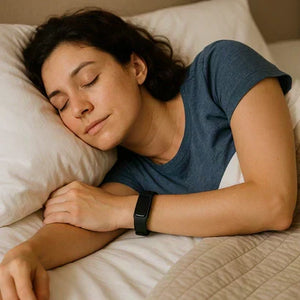 Finding the Best Fitbit Band for Sleeping
Finding the Best Fitbit Band for Sleeping
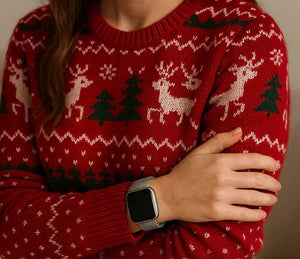 Finding a Christmas Apple Watch Strap: Celebrate the Season in Style
Finding a Christmas Apple Watch Strap: Celebrate the Season in Style
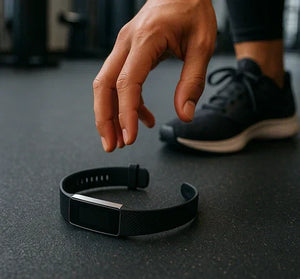 Why Does My Fitbit Strap Keep Falling Off?
Why Does My Fitbit Strap Keep Falling Off?
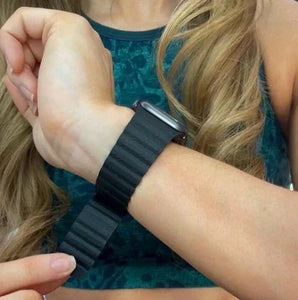 Adjusting Your Apple Watch Band For A Better Fit
Adjusting Your Apple Watch Band For A Better Fit
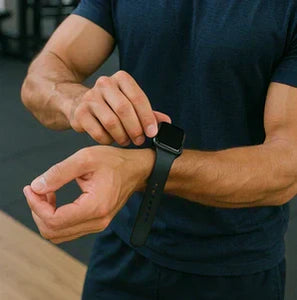 Are Apple Watch Straps Dangerous?
Are Apple Watch Straps Dangerous?




